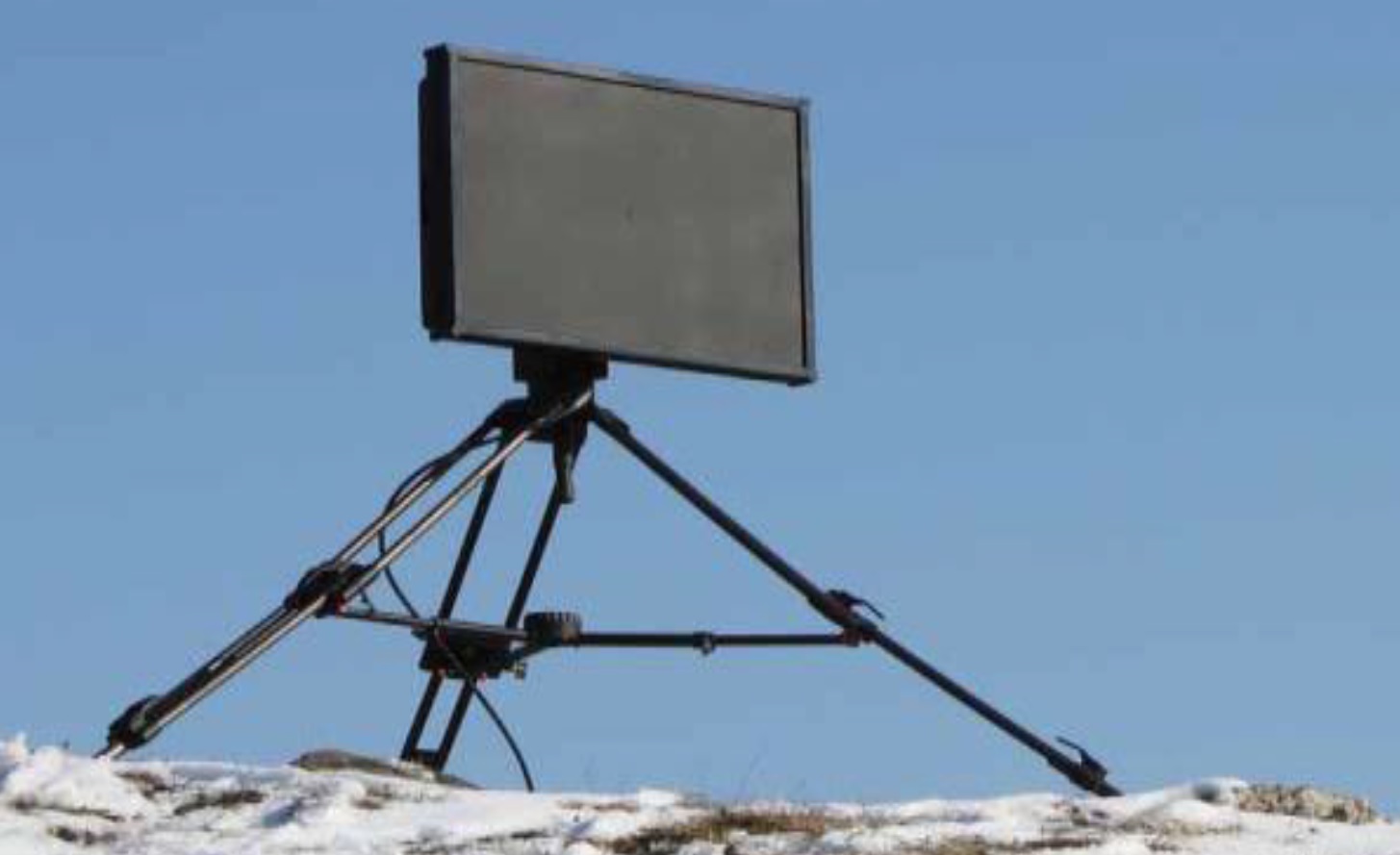“Teraskan” is able to detect and identify objects at a long distance at a sight sector that is installed in a range of ± 170˚, or operate in a continuous rotation mode, classify and identify the objects by their sizes and state of motion. Due to less radiating power this station is not a prototype of the majority of radars.
Due to its small weight and dimensions, “Teraskan” can be carried in cases or, if required, the radar can be installed on the car. "Teraskan" can be used in the networks of several dozens of radars.
.jpg)
Due to operating with complex signals it has a low-interception and low-jamming probability that allows to provide reliable, continuous, full-time surveillance for the situation in any weather.
Specifications
The Radar consists of: transmitter and receiver (antenna, SHF-transmitter, amplifier), guiding device (traversing gear), control unit (joystick), that assigns a mode of operation of radar and antenna position, processing unit (multiprocessor) and data display unit (monitor), tripods, connecting cables, power supply unit (accumulator battery with charging device/generator).
Radar design provides for different usage probability:
- Autonomous (transmitter-receiver and antenna guidance device are installed on tripod)
- As part of different reconnaissance vehicles, mobile surveillance stations
Operates on a frequency of 8-20 GHz. Transmission power is the lowest and equal to <1 W.
Detect and identify objects at a distance: human – 8-10 km, light aircraft – 15 km, tank – 20 km, truck – 24 km, a burst of 155 mm missile – 15 km. Accuracy of coordinate determination is up to 1 m.
What has been done
- The mock radar was produced. Classical non-parametric and parametric signal processing methods has been worked out
The next stages of the project
- Developing of design documentation
- Producing of prototype models
- Prototype tests
- Registration of patents
- Launch of serial production
